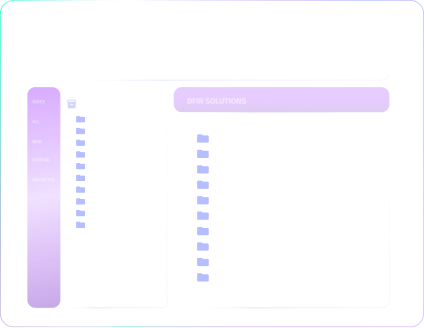The rise of SPACs and IPOs has ushered in a new era: that of mergers and acquisition as companies that were bullish on the SPAC and IPO trend find themselves unable to achieve sustainability. Discover the ways a company may be valued and what both sides need to know with respect to business valuation in M&A.
What Is Looked At in an M&A Valuation?
The business valuation in mergers and acquisitions process aims to put a dollar amount on a business by accounting for several factors and aspects of its operation. Two companies within the same niche that have the same market size may differ in valuation when you consider other aspects of business operation.
While valuing a business, appraisers tend to look at factors such as these:
- Stage of the company’s lifecycle
- Business history and reputation
- Observable growth
- Marketplace competition
- Prospects
- Cost for the buyer to build a similar business from scratch
If buyers could easily build an equivalent business from scratch without significant overhead, they are likely to attach a low value to the seller's company. They could make one just like it, so why would they pay a lot to acquire it? In this case, a seller would not have a lot of bargaining chips.
On the other hand, if the seller's company would be cost- or labor-intensive to replicate and there are outstanding prospects for the business, then it is truly a seller's market for the M&A.
While these factors impact the perceived value of the business, both parties want hard numbers to guide the negotiations. This is where the M&A valuation model provides value. An appraiser will take a range of factors into account to come up with an independent valuation for the business. When both sides understand the valuation models, or how the appraiser determined the company's worth, they can determine how much to offer or whether a buyer's offer is fair. Without this understanding, the M&A lacks objective data to guide negotiations.
M&A Valuation Models to Know
While there are several valuation methods used to determine the worth of a business, appraisers typically choose one of these three M&A valuation methods:
- Cost approach: The most straightforward approach, a cost-based valuation estimates what it would cost to replicate the business from scratch. This approach works best with businesses that are physical or tangible in nature. For example, you could gauge the cost of replicating an e-commerce business by summing the total of assets for the business.
Cost approaches to company valuations work less well for businesses that rely on intellectual capital. To give an example, it's difficult to objectively value an employee's talents or skills in a service-based businesses, so these companies are less likely to be valued with a cost approach. - Market approach: A market-based approach looks at similar business that sold recently to estimate the value of a company. This method is frequently used when there are other businesses, such as the seller's company in the same niche and geographic area. After all, a business that recently sold in another state or country does not provide useful data. This method isn't likely to be used with companies run by individuals or maverick companies in hybrid niches, since direct competitors are scarce.
- Discounted cash flow approach: The discounted cash flow approach to a business valuation compares the potential future value of the business with its present-day cash flow perspective. If a business is projected to be worth a hefty sum in a given period — say, five years from now — an appraiser will work backward from the future valuation to determine its present-day worth. This estimate then becomes the company valuation now, even though the potential future income is hypothetical.
Understanding Which Factors Contribute to a Company Valuation in an M&A
After selecting the most relevant appraisal method, an appraiser will then look at these factors to come up with the valuation:
- Assets: Adding the material worth of a company's assets and subtracting liabilities is a simple yet effective way to gauge value.
- Earnings before interest, tax, depreciation & amortization (EBITDA): Taking EBITDA allows buyers to compare the seller's company with competitors by taking out these four factors.
- Revenue multiple: This determines the value of a business proportionate to its revenue and can be used to determine whether the seller's company is “cheap” or expensive to acquire.
- Real option analysis: “Real options” are simply asset-based choices, such as machinery or business property, rather than intangible assets such as IP. Enticing or valuable real options can sweeten a deal.
- P/E (price earnings) ratio: The ratio expresses a company's share price divided by after-tax profits, and can help buyers and sellers compare a company to competitors.
- Dividend yield: Similar to discounted cash flow, this gauges the present value of a future dividend to “prove” worth.
- Entry cost: The entry cost sums up the cost from scratch to start an equivalent business; it helps the buyer weigh the pros and cons of the M&A terms.
- Precedent analysis: Comparable to the cost valuation method, this gauges the precedent price paid in similar M&A deals.
How to Prepare for M&As
Given the breadth of information looked at in M&A valuation methods, you may be wondering how to prepare for M&As and the hefty due diligence required to support the valuation.
In M&A due diligence, the buyer and seller disclose material facts about their business. Think of it as a fact-finding mission where the buyer and seller fact-check their claims to finalize the deal.
Staying organized is key to successfully navigating M&A due diligence. One of the best ways to stay organized is by using a virtual data room where both sides can upload and review key documents. A virtual data room offers secure, encrypted storage. Stakeholders can access the data room remotely to upload documents, perform due diligence and speed the deal to a successful close.
DFIN's M&A software was built with security and efficiency in mind. Discover why leading players in the M&A market view choose our M&A solutions to meet their business needs.





